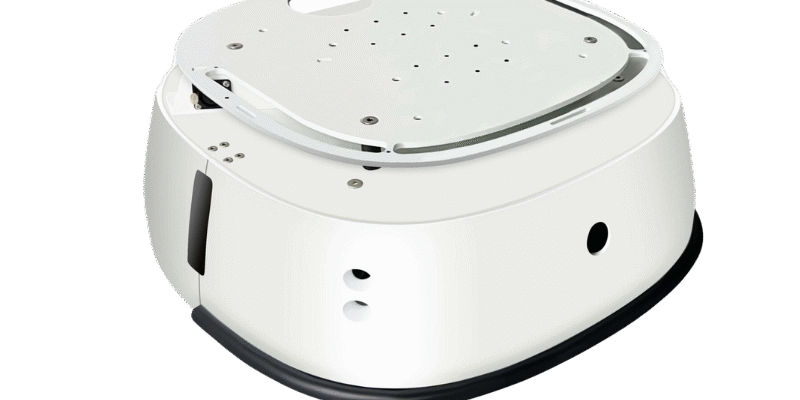The Critical Role of Robot Chassis in Service Robots and Market Trends
As the application scenarios and service models of service robots continue to expand, the demand for upper-layer development based on underlying robot applications is becoming increasingly strong, giving rise to a sub-category in the robot industry – the robot chassis.
Importance of the Robot Chassis
The importance of the robot chassis to the robot is akin to the importance of eyes to humans. From a functional perspective, the robot chassis mainly supports the robot’s positioning, navigation, obstacle avoidance, and movement functions, making it an extremely important hardware module.
Why is the robot chassis so crucial? Because the chassis bears the essential functionalities that are foundational to the robot’s operation, excluding software-based features like voice interaction and content ecosystem. Additionally, the growing number of robot chassis companies integrating navigation and positioning systems highlights the market’s recognition of the chassis’s significance.

Market Dynamics and Trends
Traditional giants such as Tencent and Baidu, along with several A-share tech companies, have invested in robot chassis companies, indicating the industry’s growing importance. The positive outlook of the robot chassis market also suggests an increasing demand for downstream products.
From a market demand perspective, the highest demand comes from the vacuum cleaner robot companies, service robot companies, and the AGV (Automated Guided Vehicle) field.
Vacuum Cleaner Robots: These primarily target the consumer market, typically using low-cost LiDAR navigation solutions.
Service Robots: These products emphasize flexibility and safety, often operating in environments like shopping malls or airports, thus choosing a combination of LiDAR and machine vision for navigation.
Industrial AGV Robots: These require extremely high precision and reliability in positioning, which leads to higher product costs.
Current Market and Challenges
Given the high cost of robot chassis, priced between $2,000 to $10,000, many companies have opted to develop their own chassis. Currently, there are about 20 companies that have commercialized robot chassis, indicating its importance as a standalone sub-category in the industry. These providers help save development time and costs, accelerate product R&D, and seize the rapidly growing service robot market.
Technological Barriers and Sensor Integration
The market explosion for robot chassis is dependent on the progress of multi-sensor integration. The technical barrier lies in the integration of various sensors under different scenarios, which has certain technical thresholds.
Physically, the robot chassis mainly involves the integration of numerous sensors like LiDAR, stereo vision, ultrasound, infrared, as well as essential components like hub motors and wheels. Proper integration of these hardware components requires corresponding algorithms and software technologies.
Currently, SLAM (Simultaneous Localization and Mapping) is the mainstream positioning and navigation technology. When discussing SLAM, sensors are the primary concern. The difficulty of implementing SLAM is closely related to the types and installation methods of sensors, which are broadly classified into LiDAR and visual sensors. Therefore, SLAM technology is divided into LiDAR SLAM and Visual SLAM.
LiDAR SLAM: This evolved from early distance-based positioning methods. The emergence and popularization of LiDAR have made measurements faster, more accurate, and information-rich. The information collected by LiDAR appears as a series of scattered points with precise angle and distance information, known as point clouds. Typically, a LiDAR SLAM system matches and compares point clouds collected at different times to calculate the relative movement distance and attitude change of the LiDAR, thereby achieving the robot’s positioning.
Conclusion
The robot chassis is a vital module that carries the robot’s mobility and navigation capabilities, and its emergence as an independent sub-category underscores its importance. The appearance of robot chassis providers not only saves development time and costs but also accelerates product development, helping companies capitalize on the rapidly growing service robot market. As multi-sensor integration technology progresses, we can expect further advancements and more widespread adoption of sophisticated robot chassis solutions.






